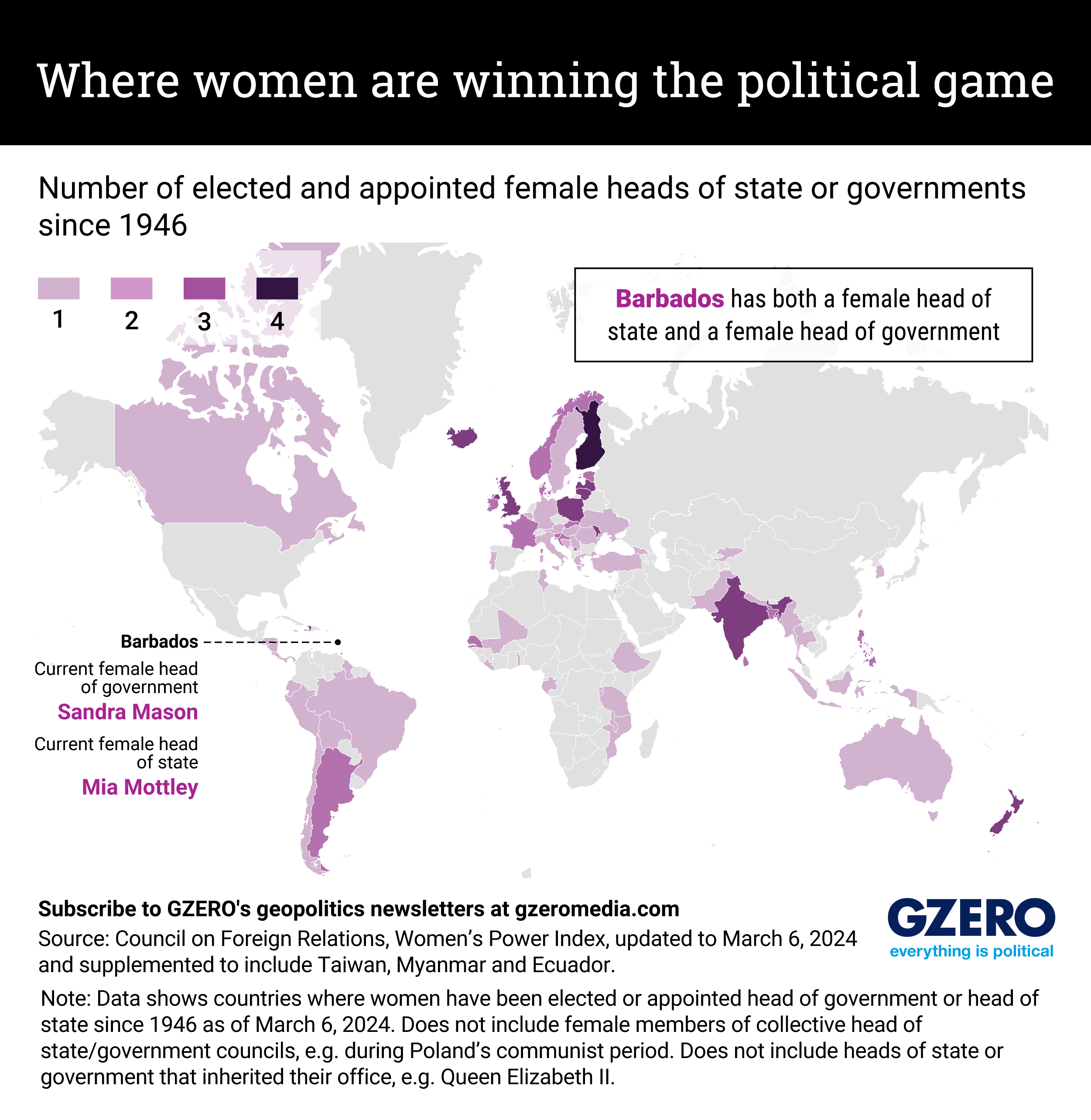Graphic Truth: Where women are winning the political game
The United States has never had a female president, but since World War II, 121 women have been elected or appointed as head of state or government in 80 countries around the world.
The top country should be no surprise: Finland has elected four women president or prime minister, most recently Sanna Marin. Of the 11 countries that have been led by three or more women in pinnacle positions, seven are in Europe, and of the 29 women currently in office, 15 are in Europe.
For women leaders with real lasting power, look to South Asia. Sri Lanka’s Sirimavo Bandaranaike became the first woman ever elected Prime Minister of any country in 1960, and went on to lead the island nation for over 17 years in total. Even Germany’s Angela Merkel only managed 16. During Bandaranaike’s last term, her counterpart in the presidency was Chandrika Kumaratunga, who held office for over 11 years.
An impressive record, but in Bangladesh, a generation has grown up under female leadership. Current Prime Minister Sheik Hasina is in her 20th year in power and counting, and her archrival Khaleda Zia led the country for 10.
The Iron Lady of India, Prime Minister Indira Gandhi, was cut down by an assassin in her 16th year in power, but India has twice elected women presidents, including the incumbent Droupadi Murmu.
And when Pakistan elected Benazir Bhutto in 1988, she became the first female elected leader of any Muslim country. She served a little over four years between two terms, but we grade on a scale in Islamabad: No PM has ever completed a full term in office.
